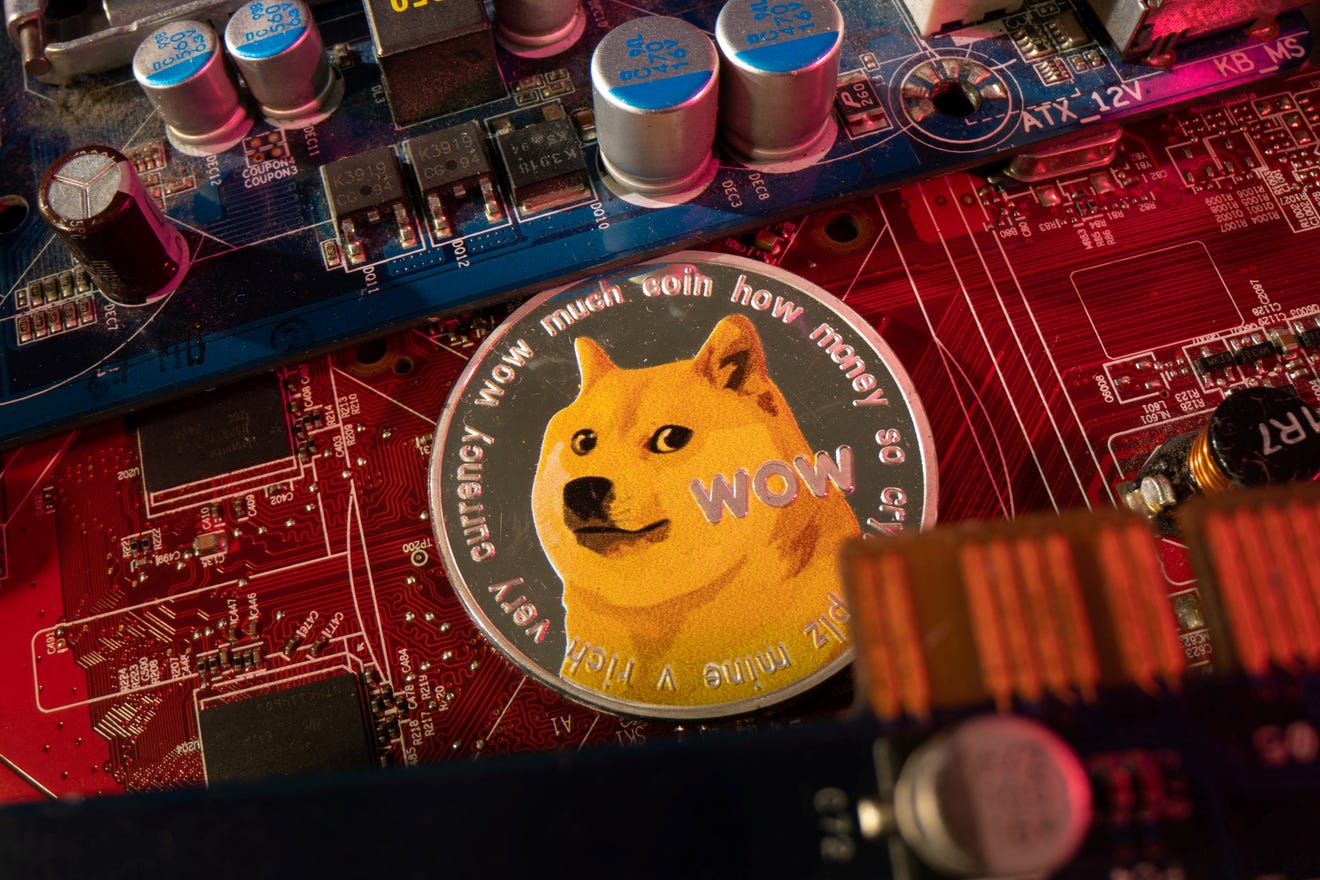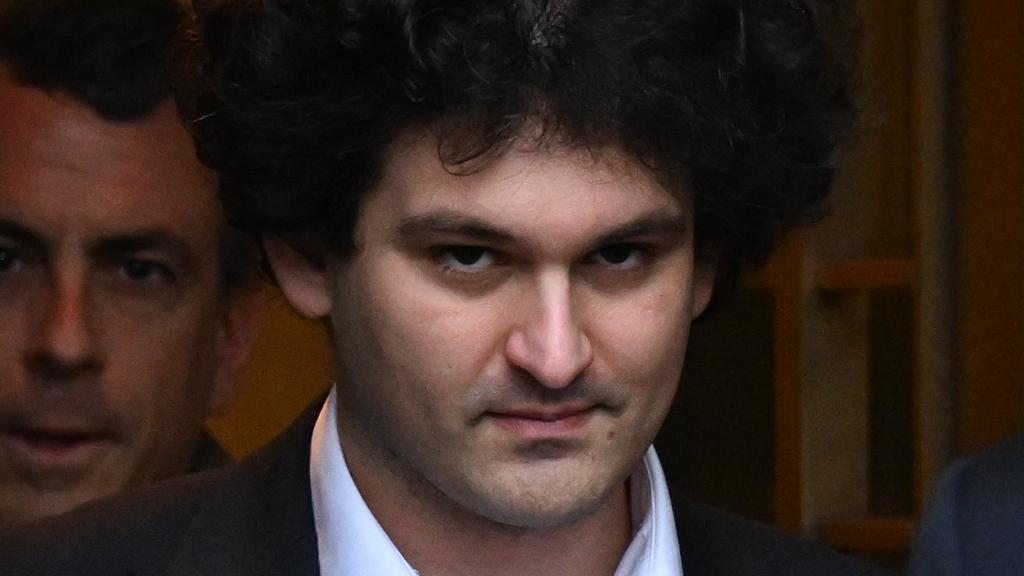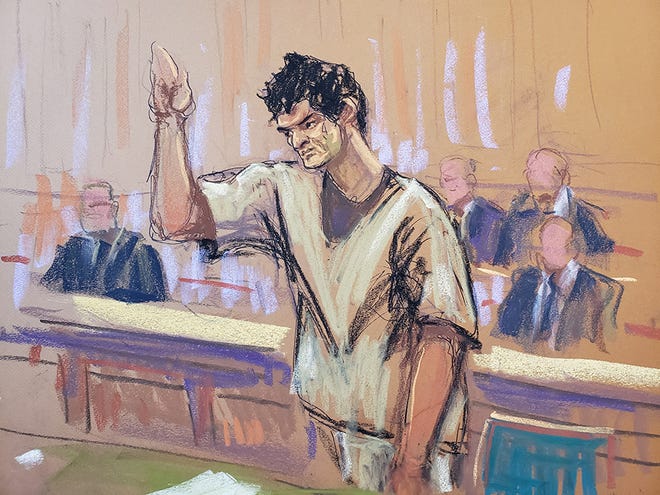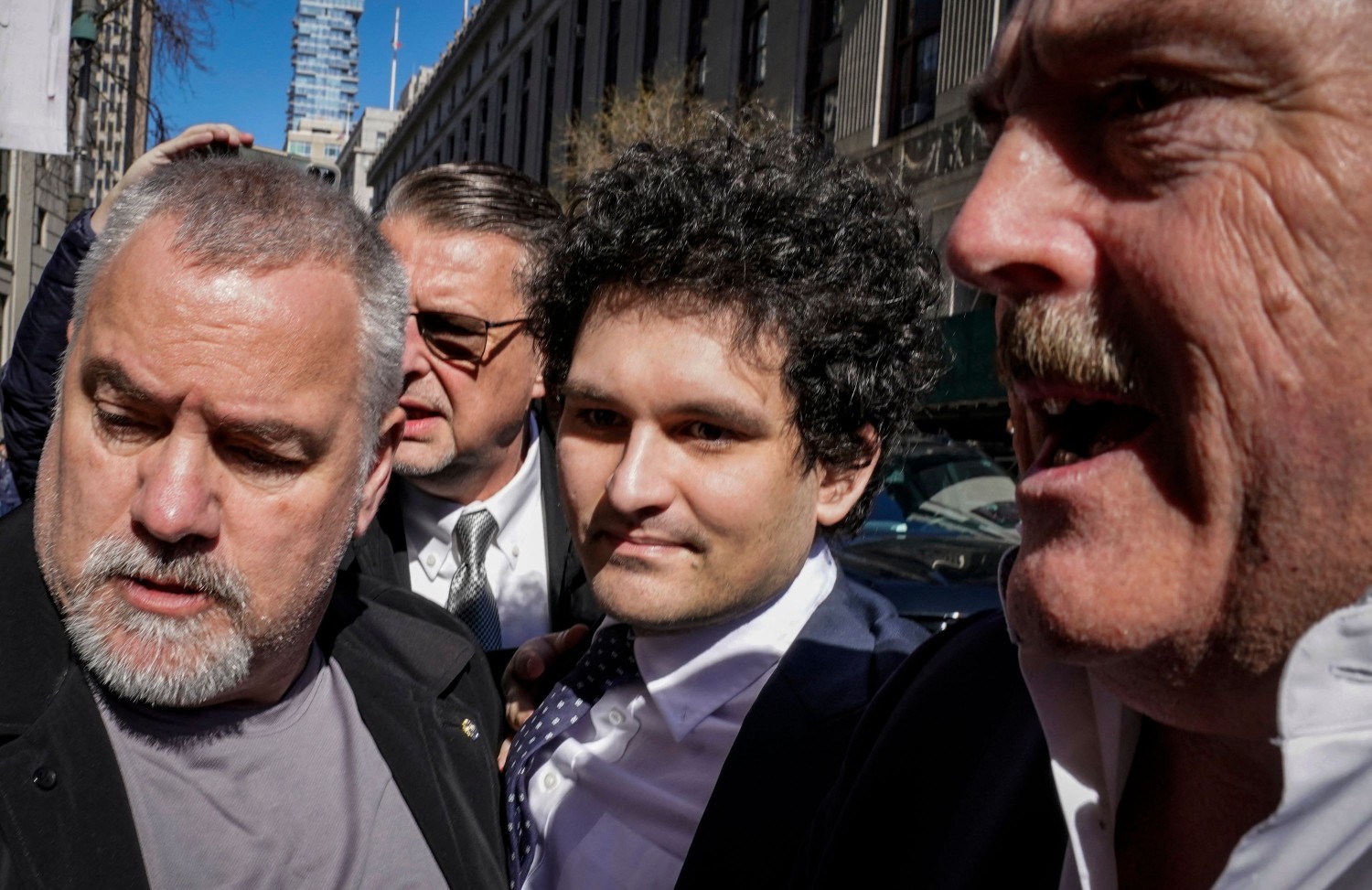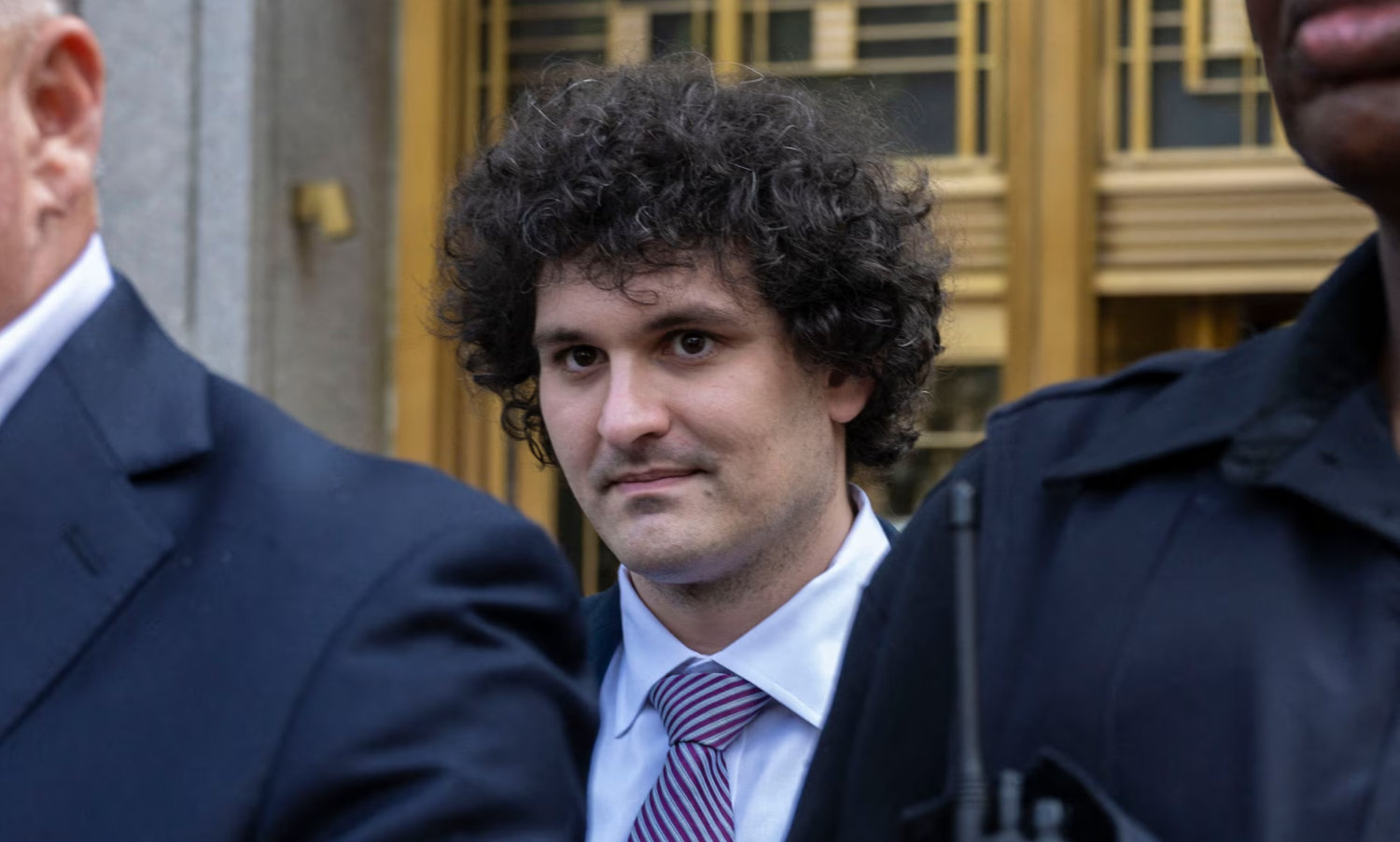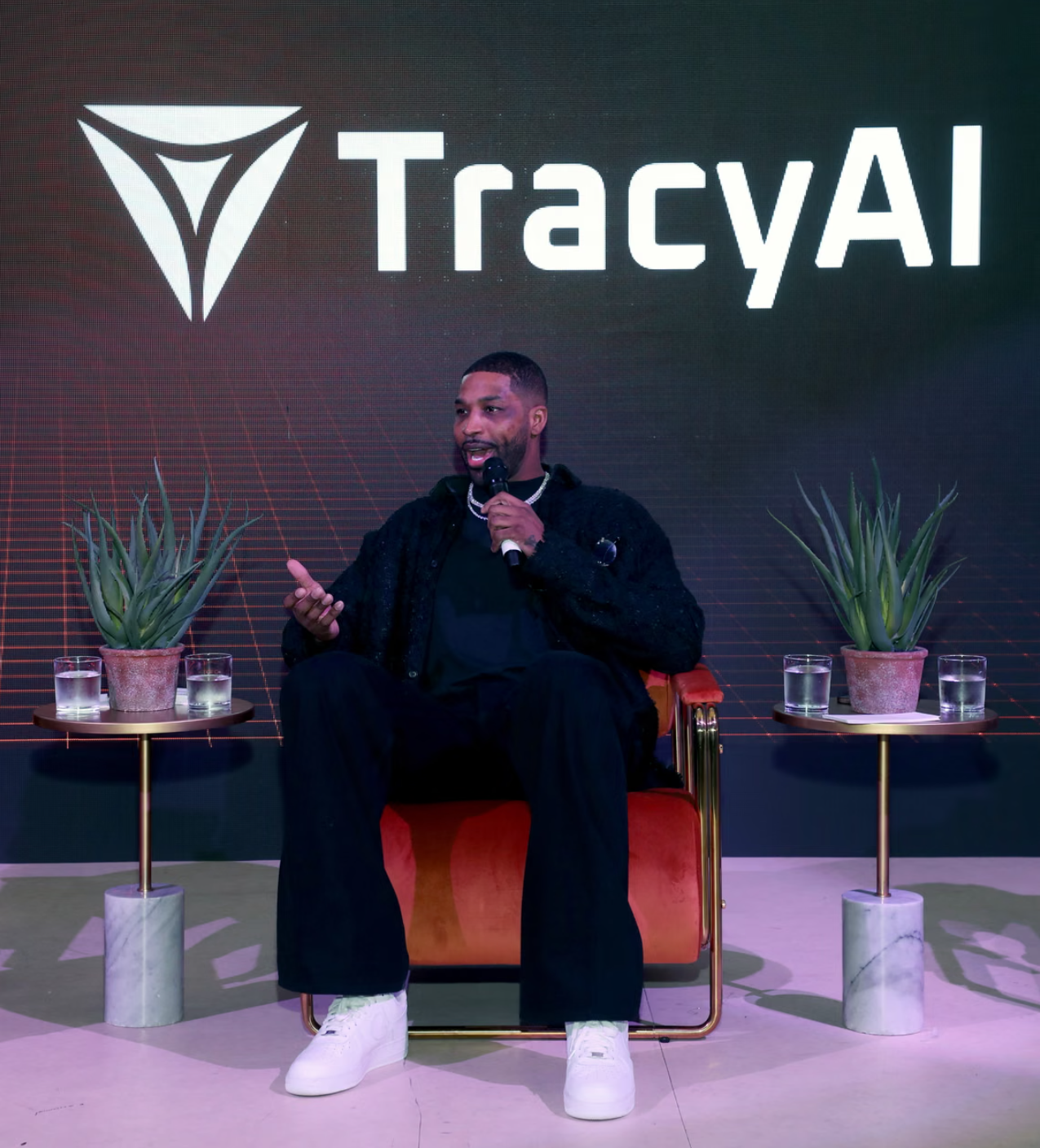
This article is more than
2 year oldThe Big Take Sam Bankman-Fried Takes Stand in Reminder of Crypto’s Epic Fall
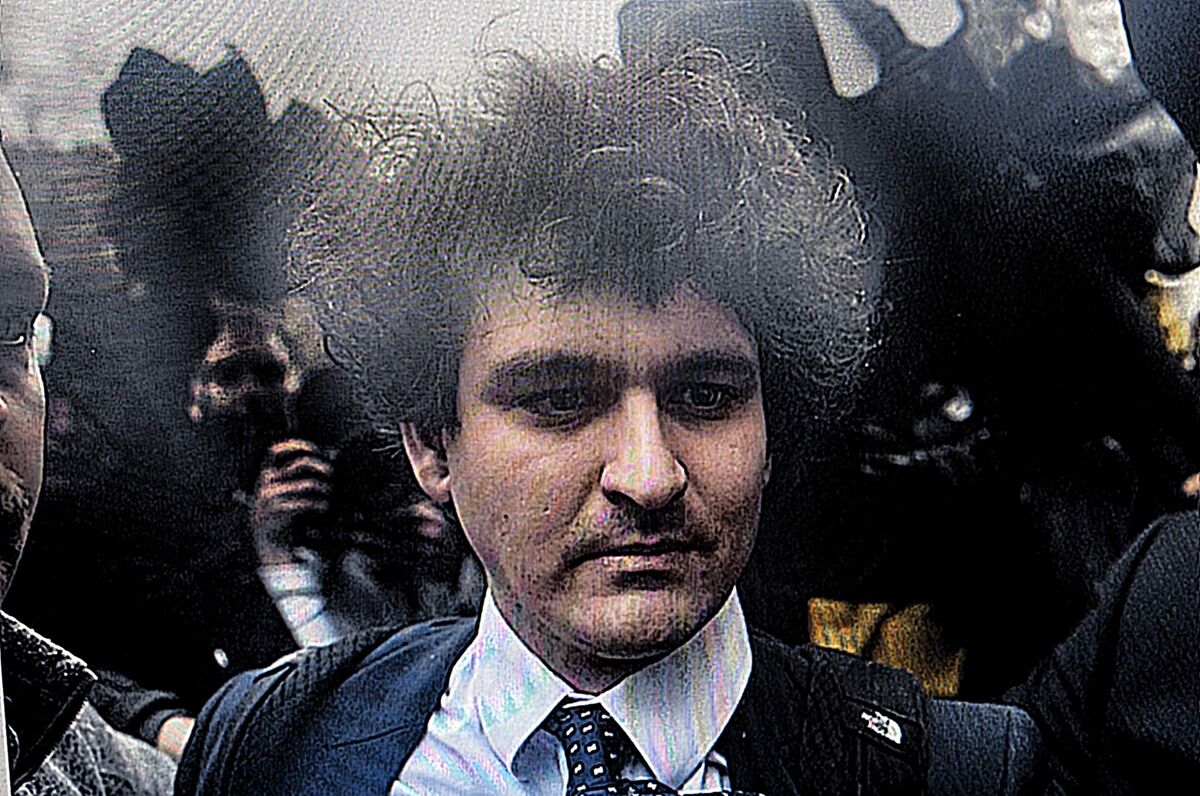
The fraud trial of Sam Bankman-Fried has often felt like a flashback from the distant past. Was there really ever a time when people thought his FTX crypto exchange was a real business, when the awkward 31-year-old—who’s expected to take the stand as soon as today—was a billionaire market mogul, respectfully consulted his take not only on cryptocurrencies but also on US market regulation, philanthropy and even the future of the human species in the face of intelligent robots?
The collapse of FTX was so spectacular and era-ending that it’s easy to assume we’re done with this episode. Maybe the crypto boom that died alongside FTX was a freak fad, and everyone’s learned their lesson about what happens when you buy made-up tokens that link to monkey JPEGs. Or when you look to Tom Brady for investment ideas. Nobody buys a pet rock twice.
But it would be a mistake to consider this a one-off. As the past few days in late October have shown, Bitcoin and other big tokens still have runs when prices fly sharply—and enticingly—upward. All the digital coins in the world, once valued by the market at more than $3 trillion, are still priced at more than $1 trillion. That represents either a lot of believers who still see something there, or a lot of wealth stuck in an illiquid, opaque market that’s still waiting to be burned away. More important, the crypto debacle is a warning about faster, bigger and more viral technology-enabled frauds to come.
A new documentary by Bloomberg Originals, RUIN: The Sam Bankman-Fried Story, captures the head-spinning frenzy around crypto. In early 2019 there was no such thing as an FTX exchange. By 2021 it was naming arenas after itself, and by 2022 it had become a force in politics and pop culture. Then by that autumn it was gone, along with much of its customers’ money. How did this happen so quickly?
Once invented, the basic idea of crypto was relatively easy and cheap to iterate and build on. Starting from the original Bitcoin in 2009, there were by some counts thousands of digital tokens by 2022. The quicksilver technology slipped through the arms of regulators and lawmakers—some of whom weren’t trying all that hard—and then busted through investors’ psychological defenses. “The technical innovation of crypto is to spam the regulators,” says David Gerard, author of Attack of the 50 Foot Blockchain and a prescient early critic of crypto. The regulatory system could hardly keep up, and that put normal people and even some supposedly sophisticated investors in a disorienting position, Gerard says. “People in well-regulated markets don’t really appreciate what it means for something to be unregulated.”
Everybody knew that crypto wasn’t regulated like, say, the US stock market or a bank. But it’s hard for people to feel in their bones how risky unregulated finance can be, because so much about regulated finance can be taken for granted. As Matt Levine put it in Bloomberg Businessweek’s “The Crypto Story” last year, crypto “quietly free-rides on people’s deep reservoir of trust.”
A stodgy compliance officer or Vanguard-investing “normies” might not approve of buying an obscure crypto coin or trading on some overseas digital exchange, but maybe that’s the kind of risk worth taking for a shot at higher returns. At a time when bond yields had been paltry for years and home prices had gotten so high that many young people felt priced out, there was a hunger for investments that seemed to be producing life-changing returns, at least for those who got in early. Crypto also came wrapped in a story that it might just be the future of money—with the dark implication that those who didn’t get in now would be fenced out of the 21st century economy. Have fun staying poor, the boosters told the doubters.
But maybe that obscure crypto coin was worse than just a bit unregulated. Maybe it was being manipulated in an elaborate pump-and-dump scheme on an exchange that was going to disappear with your money. Or maybe the crypto bank that promised to pay you 18% when regular banks were paying 0.018% was hurtling toward insolvency. In an unregulated financial market, almost anything can happen. Doing business in such a market is a step into a void.
At FTX, the pit was more than $8 billion deep—that’s the gap between what its customers thought they had on the exchange and what it could pay when it collapsed. Bankman-Fried, facing charges of fraud and money laundering, has characterized this as a huge but unintentional error on his part. The company didn’t have a chief risk officer, one of his lawyers noted, to prevent him from screwing up. But two top FTX executives and Caroline Ellison, the head of his trading firm Alameda Research, have already pleaded guilty to fraud and have helped prosecutors paint a picture of a company that wasn’t just taking big risks, but tapping its customers’ money to fund investments, political and charitable donations, real estate, loans to insiders and more.'

It was a substantially fake business—the money people thought they saw on their phones and computer screens was somewhere else, being used in ways they couldn’t have guessed. But online, FTX’s exchange looked as substantial as the app of any bank or brokerage. The trial has even revealed one small but telling example of the gap between financial reality and the digital facade FTX created. The exchange had advertised the balance of an insurance fund that was supposed to be a backup to ensure liquidity in the event of a market panic. It turns out this balance was just the output of a random number generator.
Crypto partisans will note, correctly, that regulated banks and brokers are not always trustworthy. Predatory loans, the 2008 financial crisis and a regular flow of money laundering scandals involving global banks are all testament to this. The beauty of blockchain-based assets is that you don’t have to trust anyone—in theory, you should be able to look at the code and see what’s happening with your assets. It’s supposed to be a “trustless” system.
But the digital-asset boosters overstate how much trust you need to have in a regulated financial company. Everybody knows you can’t have complete faith in a banker or broker—that’s why over time we’ve built up a system not of trustlessness, but of partial trust that’s spread around. If you hand money to, say, an online stockbroker, the broker is a separate business from the exchange where the stock is traded, which is separate from the clearinghouse that makes sure trades are settled properly. There are checks and balances, along with watchdogs. The crypto industry has generally resisted these speed bumps. “One of their talking points is that they are so different, they are so innovative, that they basically need bespoke regulation,” says Christy Goldsmith Romero, a commissioner of the Commodity Futures Trading Commission, in the film RUIN. “Why would we stray from what we know works?” Bankman-Fried, just before FTX imploded, was a familiar face on Capitol Hill pushing for rule changes to cut out intermediaries from certain kinds of trading. If the timing had been different, he might have succeeded.

FTX and Alameda weren’t very trustless—their combined operation was actually a black box that operated off of any blockchain. (The balance sheet was private and, according to Ellison’s testimony, Alameda at one point had at least seven of them, showing different numbers depending on who was asking.) But even when all data is there for anyone to see, investors have to understand it.
Consider the case of the Terra and Luna coins, a linked set of tokens that together were once worth $60 billion before suddenly cratering. Their unraveling triggered a downward spiral in crypto markets that ultimately revealed FTX’s insolvency. Two Massachusetts Institute of Technology scholars and another from the London School of Economics have studied the crash closely. They write that Terra and Luna had features—including the chance for Terra holders to earn unrealistically high interest rates—that pumped up demand and prices but made the system fragile and likely to tumble toward zero the moment investors got nervous. As it did. But the researchers add that “unlike in a classical Ponzi,” the key facts about the coins were “recorded on the Terra blockchain and, in principle, observable by all investors.”
The blockchain wasn’t enough to safeguard investors: The Terra/Luna system was complicated, wrapped in new, unfamiliar cryptospeak and relentlessly hyped by its creator Do Kwon on social media. (Kwon has been charged by the US Securities and Exchange Commission and the Department of Justice with fraud, which he’s denied.) And these coins were among the countless new investments that suddenly burst onto the market, each one presenting its own puzzle: How exactly is this supposed to work? And why does it keep going up?
If there’s to be a grand unified theory of financial bubbles, it has to take into account pure cognitive overload. Something new enters the system and changes the rules before investors have a chance to figure it out, adjust their habits and fortify their skepticism. The mortgage bubble of the 2000s showed how partial, distributed trust could be short-circuited. People had a rough sense of how home loans worked and felt safe in assuming a bank wouldn’t offer them one they couldn’t pay; investors got used to assuming that bonds backed by mortgages were safe. Most people were slow to realize that financial incentives for Wall Street had changed, that the loans were being packaged and resold in a way that made risky mortgages look safe and that rating agencies were asleep at the switch.
A few years later, crypto came along and flooded investors’ attention with novel investment ideas and the allure of fast gains. It took advantage of the fact that it looked, on the surface, a lot like the stock market and even banks that people were used to, but it had few of the guardrails. It might be a while before crypto is an easy pitch to ordinary investors again, although the industry is palpably excited about the prospect of regulatory approval for a spot Bitcoin exchange-traded fund that could pull in new buyers. But forget crypto: There’s a new technology that could help speed up everything. In an interview with Bloomberg Businessweek this summer, SEC Chair Gary Gensler warned that artificial intelligence could bring us “the crisis of 2032 or 2028 or whatever.” Tech is making it faster and cheaper for companies to learn would-be customers’ preferences, tailor sales pitches to them and build enterprises that essentially run themselves. There’s an enormous potential for investment mishaps and mischief there.

The mental race to keep up with robo fraudsters is going to be exhausting, and there’s no easy fix for that. People in a position of trust—executives, investment fiduciaries, regulators, the press—can only learn from the recent crypto experience and commit to doing their jobs. Consumers’ and investors’ best hope may be to recognize that, as the author Gerard says, “magic never happens, especially with money.”
Even speculative investments usually have a link to real economics—some way they can ultimately produce real cash you can put in your pocket other than by selling them. Crypto largely doesn’t do that. Pitches for it often depend on narratives of “flywheel” effects where a rising token price pulls more people in and then, poof, there’s an economic transformation where digital tokens—not dollars or euros or yen—are the real money. That type of exciting story is also a warning that you might be the proverbial sucker at the table. “The value of crypto assets is driven entirely by demand because there is no productive capacity behind them, and so founders and early investors can profit only if they can find new investors to sell to,” Hilary Allen, a professor at American University’s Washington College of Law, has written.
In a time of constant novelty and devastating chaos, keeping your money a little boring might be the brightest idea of all.
Read next: ‘Don’t You Remember Me?’ The Crypto Hell on the Other Side of a Spam Text
